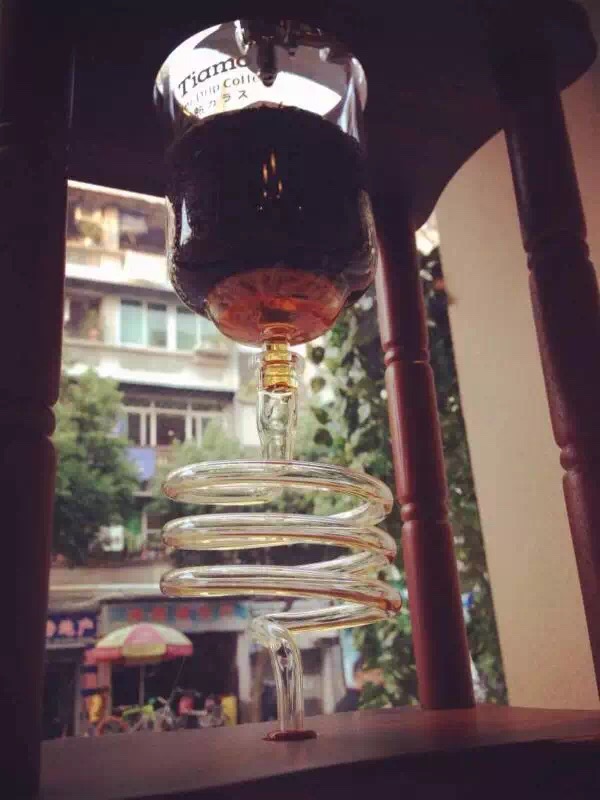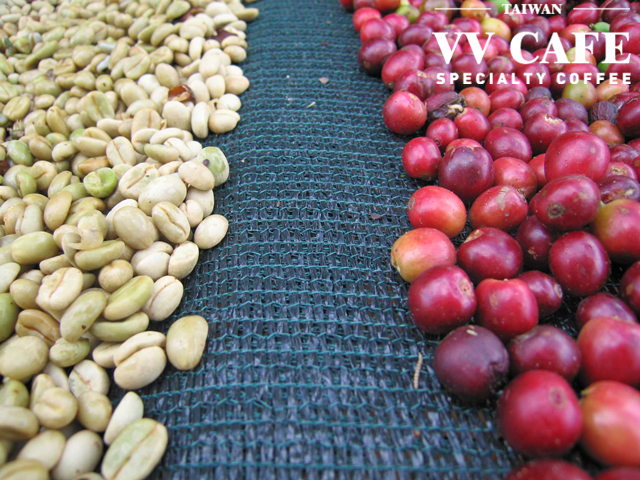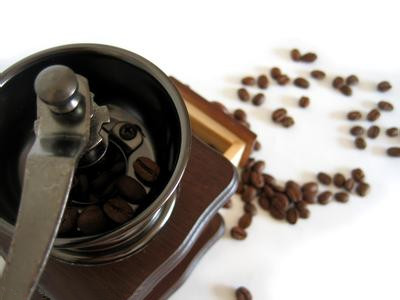Difference between iced coffee and iced coffee

It is often seen that some coffee lovers confuse ice drop (or ice brew) coffee with chilled coffee after hot coffee is added to ice, and some coffee shops or hotels take advantage of this to deceive consumers. So send this post to introduce the difference between them and the fundamental difference in connotation.
There is an essential difference between ● iced coffee and chilled coffee.
There seems to be a word difference between ice drop (or ice brew) coffee and iced or iced coffee, but the two are essentially different in extraction and should not be confused.
Ice drop (also known as ice brew) coffee is a coffee beverage extracted by soaking in water below 5 degrees Celsius for a long time at a low temperature.
Iced coffee or iced coffee refers to a cold drink coffee that is quickly extracted with hot water and then added with ice or cooled rapidly.
There is a great difference between the two in the way and time of extraction.
1. Hot coffee is made with hot water above 80 degrees Celsius or 85 degrees Celsius Second, it must be extracted quickly, because too slow will cause excessive coffee extraction to cause miscellaneous smell, and the main substance causing miscellaneous smell is tannin, which will be decomposed into pyrosylic acid after boiling, while tannic acid can be easily dissolved and decomposed in hot water. It is the main culprit that causes our coffee to be too bitter, and we generally have to be careful not to extract too much tannin and caffeine. This is the basic common sense that our coffee lovers who have been around for a while know.
2. Ice drop coffee is extracted with a temperature that must be lower than 5 degrees or even close to the freezing point, so the various ingredients contained in the coffee are not easy to extract in ice water, so it is necessary to take the way of fine grinding and slow extraction. the specific method is to soak the coffee powder in ice water for a long time and extract it at a very slow drip rate. The general standard speed is 1 drop per second, 45-50 drops per minute. It usually takes about 8-12 hours. Although it takes a long time to wait, its biggest advantage is that the tannic acid we hate most does not decompose at all in cold ice water, and caffeine decomposes a little in ice water, but it is about 90% less than hot water extraction. there are also many other major ingredients in coffee. It is precisely because there is no astringency in the iced coffee and there is little bitterness in the coffee, so the ice-brewed coffee appears to be very pure in taste, which is also a compensation for a long wait.
Through the comparison of the two kinds of analysis, you can see that the fundamental difference between hot coffee and ice drop coffee lies in the difference in extraction temperature and the content of the substance in the coffee, rather than in the cold drink or hot drink in the end, hot coffee can certainly be cold drink after ice, and ice drop (or ice brew) coffee can also be heated after heating (experts suggest that it is better to heat it through water to avoid causing foul smell by direct heating).
This is why when you want to order a real Dutch ice drop coffee in a coffee shop or hotel, you not only need to book at least one day in advance, but also its price will be much higher than that of ordinary hot coffee. "who knows the liquid in the cup. Didi is hard", this is also worth us to pay a little more money.
How does ● distinguish between iced coffee and chilled coffee
It is precisely because of this that I often find that baristas in some bad coffee shops or hotels add hot coffee to ice cubes to cool down, pretending to be authentic ice-drop coffee to deceive consumers to make high profits.
In fact, the difference between them is easy to distinguish, there are two ways:
First, after at least dozens of hours of full dripping and fermentation, the real ice drop coffee will have an unspeakable and strange aroma immediately after opening the bottle, which is the kind of aroma that hot coffee absolutely does not have, and this aroma cannot be copied in any other way. Unforgettable. So when you doubt whether it is a real ice drop coffee, ask the barista to bring up the original ice drop coffee without sugar and milk and smell it first.
Second, the taste and feeling, ice drop coffee does not have any astringency, very little caffeine content, taste very clean and refreshing, that is, even drinking a few cups will not have any palpitations or insomnia and other negative effects. Hot coffee with ice only lowers the temperature, but caffeine and tannin are not reduced, and there will be a significant difference in taste and feeling after drinking.
The Origin of ● Ice drop Coffee
On the Indonesian island of Java, which was once a Dutch colony in the 17th century, it is said that the coffee extraction method used here was introduced by Dutch businessmen, so it was named Dutch coffee Dutc Coffee. This kind of coffee drips with ice water for a long time, so it is also called "coldbrew coffee cold" or "water drip coffee".
Ice drop coffee is a coffee that is dripped in ice water for 8-12 hours at room temperature. although the aroma is not strong, it emits a unique aroma, which is not available when extracted with hot water. The biggest advantage of this kind of coffee is that it is quite pure and has no extra flavor, but it can give full play to all the ingredients in the coffee.
There are two ways to extract ice-drop coffee. One is the traditional method that is still used in many parts of Indonesia today-- putting the coffee in a lead bucket and dripping. The other is to use the all-in-one machine to drip (that is, the ice drip kettle we often see in coffee shops, it consists of a glass kettle containing ice water with a drip switch, a glass pot containing coffee powder and connected to a glass serpentine bend, and finally dripping to a glass flask. Using the dripping principle of ice drop coffee utensils, people can not help but think of laboratory tools, the function is good, the appearance also looks quite spectacular, just these can stimulate my curiosity. Ice droplets are made with a variety of tools, but the price is quite high, mainly made and sold by Japanese businessmen.
From this point of view, "coldbrew coffee cold" or "water drip coffee" both refer to the same meaning, and there is no essential difference, just different expressions and names of the same thing.
If there is a difference, I think the term "ice brew" covers a wider scope, which can refer to both ice droplets and cold bubbles.
The production of ● ice drop coffee:
The upper layer of the Dutch iced coffee drip filter is a container of water, ranging from 500cc to 3000cc according to capacity. At the bottom of the container is a switch that controls the flow of water, a long tube containing coffee powder in the middle, and a glass pot that holds coffee. When in use, put cold boiled water or ice into the upper container and coffee powder into the middle tube. The coffee powder is about between the thickness of the powder used in the French filter press and the siphon coffee maker. Turn on the switch of the upper container and let the water drop one drop at a time. The water will slowly seep through the coffee powder and drop into the lower glass pot. Basically, it's about an hour of 100cc. Adjust it to 3-5 seconds a drop as needed.
Drink: drink well in the refrigerator after drinking, the taste will be more rich and delicious.
Principle: ice drop coffee is mainly extracted by condensation natural osmotic water pressure and bit by bit. The taste of the extracted coffee will change according to the coffee roasting degree, water quantity, water temperature, water drop speed, coffee grinding thickness and other factors, and the extracted coffee has different flavor.
Features: coffee powder is 100% soaked in low temperature and moist, and the extracted coffee has a strong, smooth and rich taste. Adjust the speed of water droplets, slowly dripping with cold water, with a low temperature of 5 degrees Celsius for a long time, rich coffee flavor and low caffeine content.
Important Notice :
前街咖啡 FrontStreet Coffee has moved to new addredd:
FrontStreet Coffee Address: 315,Donghua East Road,GuangZhou
Tel:020 38364473
- Prev

Why is coffee sour and sour coffee?
For many beginners, the sour coffee always feels a bit unacceptable. Isn't it strange that the taste of the coffee is mixed with the sour taste? As an upperclassman who doesn't pay for his life, the upperclassman always thinks that it is sour and sour, so he ignores the wishes of the vast number of beginners. Today, let's take a good look at the relationship between coffee and fruit acid.
- Next

How on earth should the coffee machine be cleaned?
With the gradual introduction of Western cuisine into China, many people's daily eating habits have also changed. now more and more Chinese are drinking coffee and moving coffee machines into their kitchens. When you want to drink coffee in this way, you can make your own coffee and add a unique style to the kitchen. However, professional coffee machines need to be cleaned regularly, and some businesses are users.
Related
- What is the meaning of lactic acid fermentation with coffee bean treatment?
- How to judge the state of foam by sound?
- How does the latte pull out the unicorn pattern? Come to get for a little trick to improve the flower pull!
- Will flower pulling affect the taste of the latte?
- Do you know the history of coffee?
- The difference between honey treatment and sun washing what is raisin honey treatment?
- What kind of milk can a novice use to make coffee foam to keep the foam longer? The correct method and skills of milking tutorial sharing
- Why do washed coffee beans taste sour? Flavor characteristics of washed Coffee
- Introduction to the skill of how to practice the size and height of water injection around the circle of hand-brewed coffee
- How do beginners practice coffee flower drawing from scratch?

